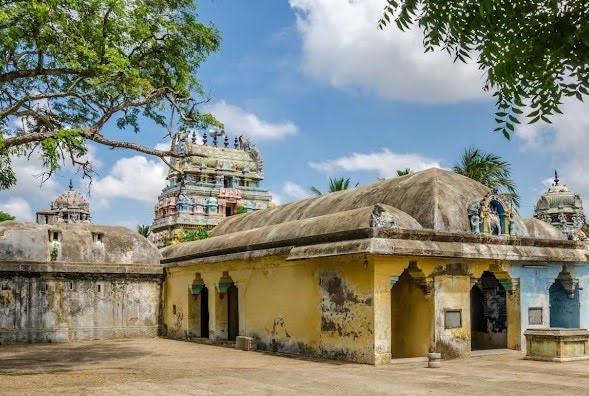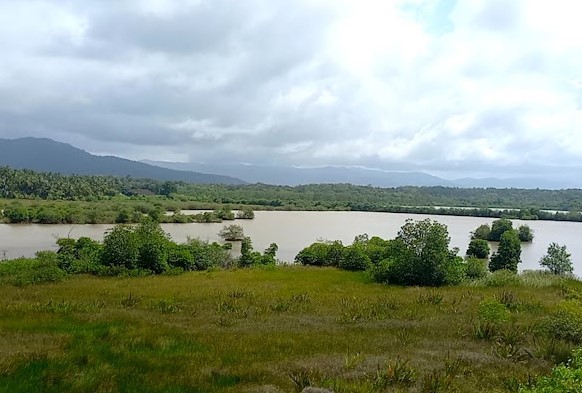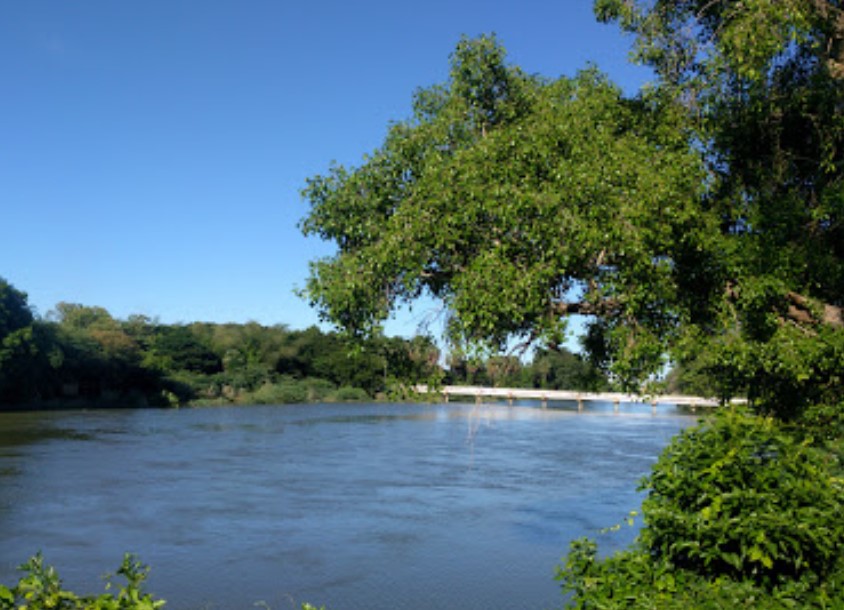- This Temple is considered as one of the shrines of the 276 Paadal Petra Sthalams glorified in the early mediaeval Thevaram hymns.
- This Temple is the 83rd Devara Paadal Petra Shiva Sthalam and 29th sthalam on the north side of river Cauvery in Chozha Nadu.
- Manickavannar Temple is a Hindu Temple dedicated to Lord Shiva located in Thiruvalaputhur Village in Mayiladuthurai Taluk in Mayiladuthurai District in Tamil Nadu.
- Presiding deity is called as Manikka Vannar / Rathnapureeswarar and Mother is called as Brahma Kunthalambigai / Vandamar Poonguzhali.
- The temple is situated on the southern banks of Kollidam River.
- The last consecration ceremony (Kumbabishekam) took place on 08.09.2005 and prior to that on 01.09.1985.
- Lord Shiva in this temple is a Swayambumurthi (self-manifested). This temple is famous for Goddess Ashtapuja Durgai.
PURANIC SIGNIFICANCE:
Thiruvaloliputrur
As per legend, Arjuna visited this place during his pilgrimage to South India. Feeling thirsty and in search of water, he encountered Lord Shiva in the guise of an old man. The old man advised Arjuna to strike the ground under a Vagai tree with a stick to find water. Arjuna gave his sword to the old man to use for this purpose. While Arjuna was drinking the water, Lord Shiva hid the sword in a hole in the tree and vanished.
Upon returning, Arjuna found that the old man was gone. Following the footprints, he discovered a glittering anthill with a Shivalinga, along with his sword hidden in the nearby tree. Lord Shiva then appeared before him, revealed that the old man was himself, and blessed Arjuna. The place became known as Thiruvaloliputrur, derived from "Thiru" (honorific prefix), "Val" (sword), "Oli" (to hide), "Putru" (anthill), and "Oor" (place), which later transformed into Thiruvalaputhur.
Vasuki's Penance on Lord Shiva
During the churning of the Ocean of Milk (Samudra Manthana), Mount Mandara served as the churning rod, while Vasuki, the Nagaraja residing on Lord Shiva's neck, was used as the churning rope. As they churned, the Halahala poison escaped from Vasuki's mouth, endangering the creation and causing fear among the gods and demons.
The Devas turned to Lord Shiva for protection, and He consumed the poison, which caused Him immense pain. To alleviate His suffering, Mother Parvati placed her hand on His throat, halting the poison's flow and turning His throat blue. Consequently, He became known as Neelakantha (the blue-throated one).
Vasuki, burdened with sin for releasing the Halahala poison, came to Earth to perform penance under the Vagai tree in an anthill. Lord Shiva granted him darshan and relieved him of his sin. Vasuki then requested that Lord Shiva stay in this place, which He did in the form of a Shivalinga, although this Linga later disappeared over time.
Manicka Vannar
During the reign of King Ruduketan, the region suffered from a severe famine. The king surrendered at the feet of Lord Shiva, who poured down a rain of diamonds and instructed him to use the riches for the welfare of his people. Consequently, Lord Shiva came to be known as Manicka Vannar. According to another legend, Lord Vishnu installed a Manicka (Ruby Lingam) here, further solidifying this title.
Durga and Mahishasura
It is said that Goddess Durga annihilated the buffalo-headed demon Mahishasura at Kidathalaimedu, a nearby location. After this victory, Goddess Durga came to this temple to seek solace. As a result, it is customary to worship Goddess Durga first in this temple before offering prayers to Lord Shiva.
People Who worshipped at the Temple
The temple is believed to have been visited and worshipped by several revered figures, including Arjuna, Vasuki, Lord Vishnu, Durga, Indra, King Ruduketan, and the Pandavas along with Draupadi. The presence of such legendary devotees adds to the temple's spiritual significance.
ADMINISTRATION:
Managed by the Hindu Religious and Charitable Endowments Department of the Government of Tamil Nadu (HR&CE).



